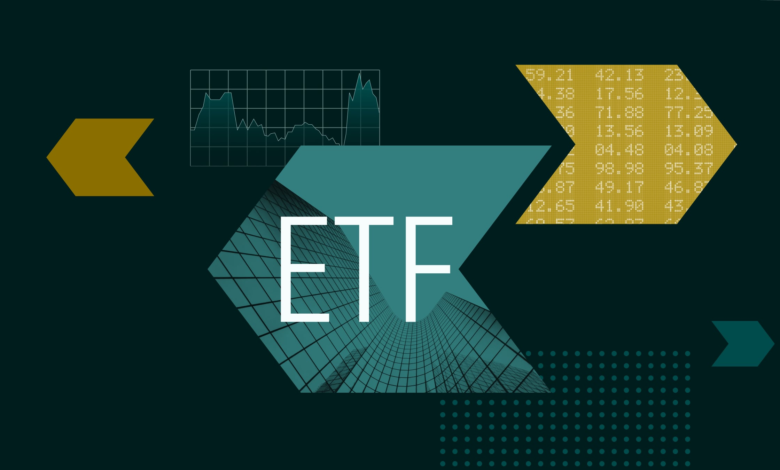The Big Winners in the Active ETF Race, So Far

Active exchange-traded funds captured more fresh inflows through the first three quarters of 2025 than in any other previous full year. They’ve pulled in $338 billion so far; more than 2021, 2022, and 2023 combined.
The rise of active ETFs continues to gain momentum. Here’s a look at what’s been driving that growth this year, from Securities and Exchange Commission approvals to new fund launches, as well as which asset managers have capitalized on the popularity of active ETFs.
Active ETFs Outnumbered Passive ETFs for the First Time
New active ETF launches have aided the group’s record inflows. The number of active ETFs surpassed passive ETFs in June 2025, and active ETFs have captured an increasing percentage of flows. Active ETFs’ market share has nearly quadrupled since an Securities and Exchange Commission rule change in 2019, which made it easier to launch and manage them. Active stock ETFs continue to be the most popular category for new fund launches, followed by bond ETFs.
The introduction of ETFs as a share class should push active ETFs’ market share even higher, since they should eventually give investors the ability to convert their mutual fund shares into ETFs (if offered by the fund provider) without triggering capital gains distributions or taxes. That’s good for investors since ETFs usually charge lower fees and are more tax-efficient, allowing investors to keep more of their gains.
It’s All Derivative
State Street launched 14 active ETFs in the third quarter, the most of any firm. They rolled out 11 derivative-income versions of their Select Sector SPDR ETFs at the end of July, which track individual sectors of the US stock market. The ETFs hold their Select Sector SPDR ETF counterparts and sell call options on those ETFs to earn additional income at the cost of a diminished upside. These ETFs capture the entire downside, but they’re somewhat protected by the small cushion that their extra yield provides. Investors should weigh the trade-offs.
The demand for derivative-income funds has been high in 2025, and the derivative-income Morningstar Category has seen the most inflows of any category so far this year. Seventy-two new listings had proliferated in 2025 as of September, and assets in these ETFs have climbed to $127 billion from under $1 billion at the end of 2020.
Model Providers
JP Morgan led inflows for active ETFs year to date through September 2025. JPMorgan Nasdaq Equity Premium Inc ETF JEPQ and JPMorgan Equity Premium Income ETF JEPI both made the top 20 list of ETFs by inflows. These two ETFs are some of the oldest in the derivative-income category despite JEPI being just over five years old and JEPQ just over three. Together they make up over half the assets in the derivative-income category and represent about one-third of all JP Morgan’s active ETF flows so far this year.
Several iShares ETFs topped the list for active ETF flows in 2025. iShares US Equity Factor Rotation Active ETF DYNF, iShares US Thematic Rotation Active ETF THRO, and iShares AI Innovation and Tech Act ETF BAI sit in BlackRock’s target allocation models. BlackRock increased these three ETFs’ weights in the models, and the ETF flows reflect that. BlackRock’s reshuffling of its models creates both inflows and outflows, but overall, money has flowed in. They ranked third in active ETF flows year to date.
First Trust sits atop the leaderboard for active ETF launches year to date. Fourteen of its 24 launches were defined outcome ETFs that are sub advised by Vest. Vest specializes in these ETFs, which use call and put options that typically limit losses while capping gains. This structure appeals to risk-averse investors, and the defined outcome category has seen steady inflows since 2021.
Bond, Ultrashort Bond
Ultrashort bonds got a boost this year. They found popularity among investors during a tumultuous first nine months of 2025. Janus Henderson AAA CLO ETF JAAA had the most inflows of any ETF in the category. It represented more than 25% of the category’s inflows, minting a fresh $9 billion. JAAA invests in collateralized loan obligations, which are actively managed, diversified pools of non-investment-grade bank loans. These are riskier than the securities that peers like iShares 0-3 Month Treasury Bond ETF SGOV hold, but that extra risk is rewarded with higher yields, which have drawn investors to the ETF.
ETF Royale
The previous data in this article focused on ETFs designed for long-term investment horizons and left out the trading-tool Morningstar Global Category. However, the number of trading-tool ETFs has more than doubled in the first three quarters of 2025. Most of those new listings fell into the leveraged-equity Morningstar Category. Nearly all are single-stock ETFs that try to replicate the leveraged performance of only one stock, or in some cases, one cryptocurrency.
The leveraged-equity Morningstar Category has a troublesome track record. More than 40% of its ETFs that launched before 2024 have closed, and nearly 15% of those ETFs lost more than 70% of their value over their lifetimes. It’s no surprise that the Securities and Exchange Commission released a warning alerting investors to the potential dangers when single-stock ETFs first hit the market in 2022.
The limit for leverage in a single-stock ETF sits at 2 times, but fund providers have filed for new ETFs that seek up to 5 times leverage on a single stock. For context, a 20% drop in the value of the stock would wipe out those funds, and a 10% drop would cut the value in half. The stocks these funds target, such as Strategy Inc MSTR, tend to be more volatile, which increases the odds of implosion. They’re aimed at short-term speculators and don’t fit the mold of sound long-term investments.






